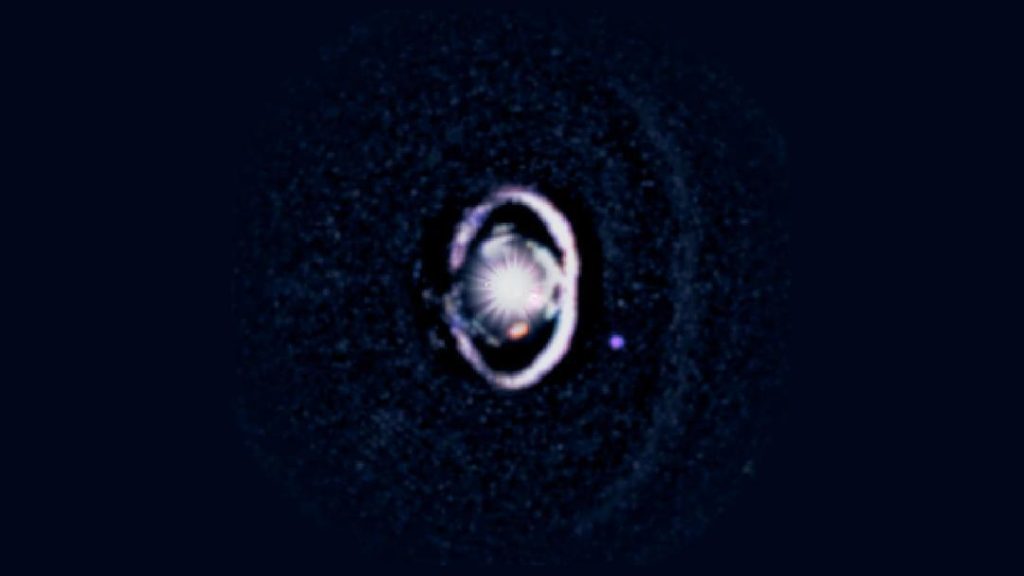
Baby Planet Captured Inside a Ring of Darkness for the First Time
Astronomers have achieved a groundbreaking milestone in the field of exoplanetary research by capturing the first direct image of a baby planet inside a dark ring gap in a multi-ringed disk around a young star. The growing planet, named WISPIT 2b, is estimated to be about 5 million years old and is located around WISPIT 2, a young solar-analog star located approximately 430 light-years away in the constellation Aquila.
The discovery was made possible through the use of advanced imaging techniques and powerful telescopes. The team of astronomers used the Hubble Space Telescope and the Gemini North Telescope to capture the image of the baby planet, which is surrounded by a ring of darkness. This ring gap is a region where the disk of material around the star is depleted, likely due to the gravitational influence of the growing planet.
WISPIT 2b is a remarkable find because it is one of the youngest planets ever imaged. The planet is still in the process of forming and is likely to continue growing as it absorbs more material from the surrounding disk. The image of the planet provides valuable insights into the early stages of planetary formation and the conditions that lead to the development of planetary systems.
The discovery of WISPIT 2b is significant because it challenges our current understanding of planetary formation. According to our current understanding, planets form in a disk of material around a young star and grow through the accumulation of small particles and collisions with other objects. However, the image of WISPIT 2b suggests that planets may also form through the gravitational influence of other planets and the depletion of material in certain regions of the disk.
The team of astronomers behind the discovery used a technique called adaptive optics to correct for the distortions caused by the Earth’s atmosphere and to obtain high-resolution images of the planet. They also used a combination of visible and near-infrared light to capture the image of the planet, which is surrounded by a disk of material that is warm and emitting light.
The discovery of WISPIT 2b is a testament to the power of modern astronomy and the ability of scientists to capture high-quality images of distant objects. The image of the planet provides a unique window into the early stages of planetary formation and is likely to be studied extensively by astronomers and planetary scientists in the coming years.
In an interview, Dr. Sean Andrews, a co-author of the study and astronomer at the Harvard-Smithsonian Center for Astrophysics, said, “This is a major breakthrough for our understanding of planetary formation. We’re seeing the planet in a very early stage of its life, and it’s giving us a glimpse into how planets form and evolve over time.”
The discovery of WISPIT 2b is also a reminder of the vastness and complexity of the universe. The planet is located in a distant star system, and the image of the planet was captured using powerful telescopes and advanced imaging techniques. The discovery is a testament to the power of human curiosity and the ability of scientists to explore and understand the universe.
In conclusion, the discovery of WISPIT 2b is a significant milestone in the field of exoplanetary research and provides valuable insights into the early stages of planetary formation. The image of the planet is a remarkable find and is likely to be studied extensively by astronomers and planetary scientists in the coming years.
Source:
https://news.arizona.edu/news/growing-baby-planet-photographed-first-time-ring-darkness






